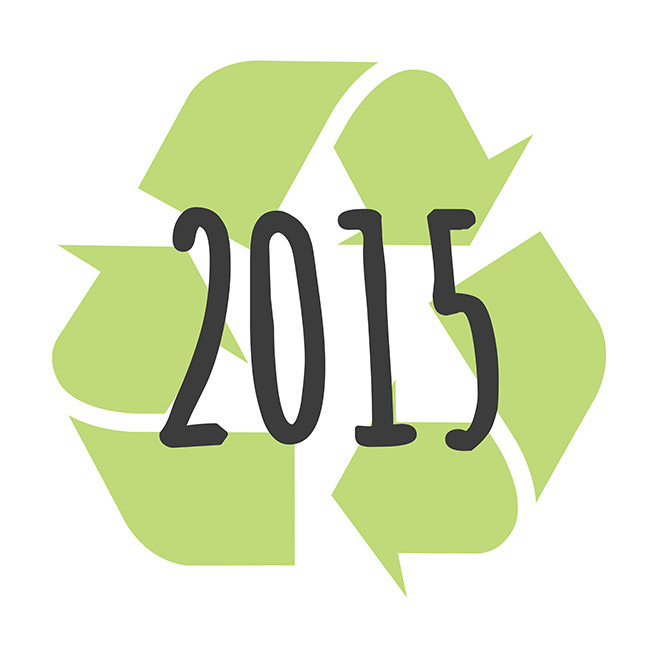By: Anne Staley
To achieve our recycling goals, we need to act at an individual as well as community level. In this post, I present a seven-day recycling plan for my community/neighborhood & workplaces. Read on to know more about my 7 days of recycling.
I have often said that recycling is about making a commitment. It’s a commitment you make at an individual level and as part of a larger social group. It takes effort, initiative and some amount of leadership to achieve the recycling goals we set for ourselves as a community.
So, rather than waiting for someone to take charge and lead us closer to our recycling goals, I have decided to take matters into my own hands and devise a unique recycling plan. World, say hello to my – “7 Days of Recycling” (drum roll…maybe not!).
Here’s a detailed recycling plan on what we, as a community, can do on each day of the week to recycle our waste in a proper and streamlined manner.
Day#1
Monday: Plastics
Recycling plastic is the most troublesome because it’s difficult to identify what can and cannot be recycled. To make it easier for consumers to identify different types of recyclable plastic, the Society of Plastic Industry (SPI) has devised a code. Look for a number from 1 to 7 surrounded by the three-arrow recycling symbol at the bottom of a plastic container. These numbers identify seven types of recyclable plastic. So, number 1 is assigned to PET containers such as soda and water bottles, detergent bottles, liquid cleaner bottles, etc. Number 2 is for HDPE plastics that include milk jugs, lotion bottles, etc. This EPA factsheet has more details on types of recyclable plastic. Why we need to know this is because not all recyclers accept all types of recyclable plastic.
Day#2
Tuesday: Paper
Both high-grade papers that are found in office environments as well as other types of papers and cardboard can be recycled. Examples of high-grade paper include computer paper, copy machine paper, white notebook paper, white envelopes, manila-colored computer cards, etc. Other types of papers include non-white office papers, corrugated cardboard, newspaper, and any other clean and dry paper that does not fall into the aforementioned categories. If you’re wondering what happens to all the paper once it’s recycled, it’s used to make new paper and cardboard boxes. Hey, did you know that by recycling one ton of paper, we can save as many as 19 mature trees?
Day#3
Wednesday: Glass
There are two categories of recyclable glass – color-separated and mixed color. The former has more market value than the latter and includes all container glasses that are separated into clear, green, and brown. The glass recovered for recycling is ground, after its non-recyclable parts are removed, and is used to make new glass containers. Here’s something you probably didn’t know – glass takes the longest (about 4,000 years) to biodegrade in the natural environment. Imagine how much we’ll be helping our environment by not disposing glass in normal waste.
Day#4
Thursday: Compost
Don’t start curling up your nose in disgust just yet. Did you know that you can convert almost all your organic/biological waste into fertilizers rich in nutrients? The process is pretty simple. It starts with collecting food scraps, yard trimmings, and non-recyclable paper. Adding garden soil to the compost can masks the bad odor from the food waste. For the actual process of composting, we can make our own compost pile or buy a composter.
Day#5
Friday: Metals
Ferrous metals include iron and other metals that contain iron such as wrought iron and stainless steel. Non-ferrous metals include all other metals ranging from aluminum and lead to copper and brass. A simple test to determine if the metal scrap you’re dealing with is ferrous or non-ferrous is to get a magnet. If the magnet sticks to the metal, it is ferrous and if it doesn’t, it’s non-ferrous. The metal scrap can be taken to a scrap yard or a recycling facility. Certain scrap recycling facility like SIMS Metal Management buys both types of metal scrap, so that’s an option we could explore (and earn some cash in the process to buy the composter I mentioned earlier).
Day#6
Saturday: E-waste
A lot of states have rules that bar mixing e-waste with other types of household trash. E-waste typically includes all types of electrical and electronic items such as mobile phones, televisions, computers, kitchen appliances, white goods, toys, cables, etc. E-waste contains a number of toxic substances that make land-filling or burning it a hazardous option. So, it has to be disposed in a proper manner. Again, certain recycling facilities accept e-waste from households as well as commercial establishments.
Day#7
Sunday: Clothes
Reuse – one of the three R’s of green living. If we want to save our precious natural resources, we need to make reusing a lifestyle choice. Clothes are something that can be easily reused. The clothes that you want to discard can, in fact, be used by someone else…someone needier and less fortunate than you. We can donate clothes to national charities like the Salvation Army or the Goodwill Industries. We can also donate them at local churches or homeless shelters in our community.
So these are my seven days of recycling to make our community & workplaces cleaner, safer and more responsible. Check out the infographic or tell us what you think, won’t you?






































































































































 Three Ways to Engage Teams and Clients to Maximize Your Recycling Program Engagement
Three Ways to Engage Teams and Clients to Maximize Your Recycling Program Engagement  How to Integrate Accessibility Into Your Sustainability Planning
How to Integrate Accessibility Into Your Sustainability Planning  Why Park Benches Can Promote Workplace Well-Being
Why Park Benches Can Promote Workplace Well-Being 
